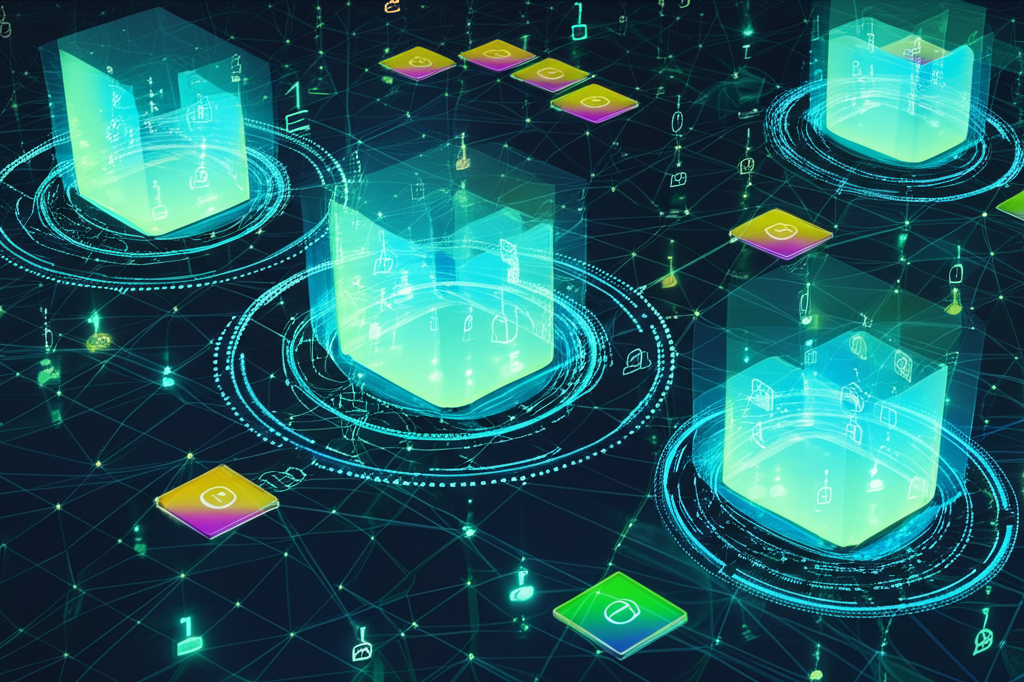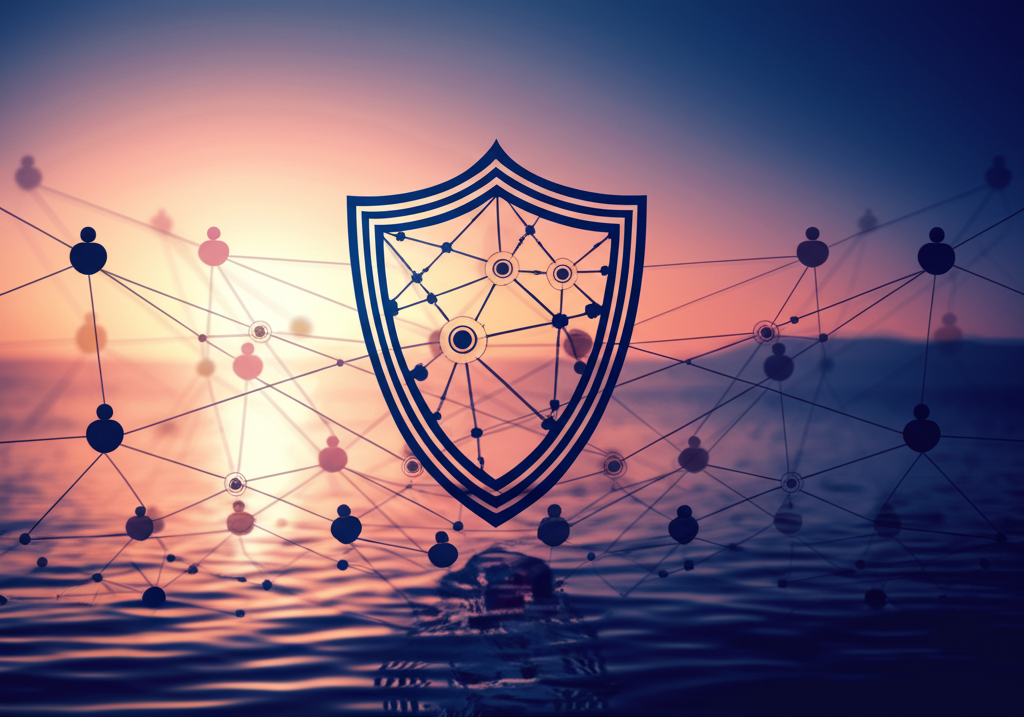Zero-Trust: The Future of Cybersecurity
A paradigm shift in security architecture where trust is never assumed, and verification is always required—regardless of where the request originates or what resource it accesses.

Zero-Trust architecture creates a digital fortress where every access request is fully authenticated, authorized, and encrypted.
Treat all users, devices, and network traffic as potential threats, regardless of location.
Authenticate and authorize every access request before granting access to resources.
Limit access rights to only what is necessary for users to do their jobs and nothing more.
The Human Error Factor: 95% of Data Breaches
Despite technological advancements, the overwhelming majority of data breaches and security incidents can be traced back to human error—making it the most critical vulnerability in modern cybersecurity.
Source: IBM Security's Cyber Security Intelligence Index Report (2023) and Verizon's Data Breach Investigations Report (DBIR 2024), which found that 95% of cybersecurity incidents involve human error as a contributing factor.

The Human Element
Even the most sophisticated security systems can be compromised by simple human mistakes.
Overlooking security protocols, misconfiguring systems, or failing to apply patches promptly can create critical vulnerabilities.
Granting users more access than necessary increases the attack surface and magnifies the impact of compromised credentials.
Human psychology makes us susceptible to manipulation through phishing, pretexting, and other social engineering tactics.
The Sobering Reality
According to industry research, approximately 95% of cybersecurity breaches are caused by human error. This statistic underscores a critical truth: our security systems are often only as strong as the humans operating them.
52%
of breaches result from phishing and social engineering
34%
involve internal actors through negligence or malicious intent
28%
are caused by misconfiguration and improper access controls
The Zero-Trust Movement: Removing the Human Risk Factor
A fundamental shift in cybersecurity philosophy is needed—one that acknowledges human fallibility and designs systems that minimize the impact of inevitable human error.
The Zero-Trust model fundamentally reverses traditional security approaches. Instead of the outdated "trust but verify" model, it implements "never trust, always verify" as its core principle.
Grant minimal access required for job functions
Implement time-bound access that expires automatically
Require continuous verification for all resources
Segment networks to contain potential breaches
Zero-Trust architecture requires continuous authentication and authorization, treating each request as if it originates from an untrusted network.
Traditional Security
Perimeter-based security
Trust internal network traffic
One-time authentication
Zero-Trust Security
Identity-based security
Verify all traffic, internal and external
Continuous authentication

Layered Defense
Zero-Trust creates multiple verification layers, significantly reducing the impact of human error.
The Zero-Trust Advantage
Identity-Based Security
Focus on authenticating user identity rather than network location
Micro-Segmentation
Divide networks into isolated zones to contain breaches
Least Privilege Access
Restrict access rights to the minimum necessary for each role
A New Security Standard
The Zero-Trust model represents a fundamental shift in how we approach security. By acknowledging human fallibility and designing systems that minimize its impact, we can create more resilient security architectures that withstand both external attacks and internal mistakes.
"In a Zero-Trust world, we assume breach and verify each request as though it originates from an open network. Regardless of where the request originates or what resource it accesses, we never trust and always verify."
Building More Secure AI Systems
Artificial intelligence offers unprecedented capabilities to enhance security, automate verification, and reduce human error—creating a more resilient security posture.
Advanced AI systems can analyze code for security vulnerabilities with greater accuracy and speed than human reviewers, identifying potential issues before they reach production.
Detect complex vulnerabilities through pattern recognition
Analyze dependencies for known security issues
Suggest secure alternatives to risky code patterns
Continuously learn from new vulnerability discoveries
AI systems excel at identifying anomalous patterns that might indicate security breaches, often detecting subtle threats that would escape human attention.
Monitor network traffic for unusual patterns
Detect anomalous user behavior that may indicate compromise
Identify potential data exfiltration attempts
Respond automatically to contain threats in real-time

Neural Sentinels
AI systems can monitor and protect digital assets with superhuman vigilance and precision.
Continuous Verification
AI systems can perform continuous authentication by analyzing multiple factors simultaneously, creating a more robust security posture.
Behavioral biometrics that analyze typing patterns and mouse movements
Context-aware authentication that considers location, device, and time
Risk-based authentication that adjusts requirements based on request sensitivity
AI as a Security Multiplier
AI doesn't replace human security professionals—it amplifies their capabilities. By automating routine verification tasks and detecting subtle threat patterns, AI allows security teams to focus on strategic initiatives and complex challenges that require human creativity and judgment.
Human-AI Collaboration
The most effective security postures combine AI's tireless vigilance with human strategic oversight. AI handles the volume and velocity of security data, while humans provide context, judgment, and decision-making for complex scenarios.
Ethical Considerations
As we deploy AI security systems, we must ensure they operate ethically, with appropriate oversight and transparency. AI should reduce human error without introducing new vulnerabilities or biases into security processes.
The Same Team Mindset: United Against Threats
Security is not solely the responsibility of IT departments or security professionals—it requires a collective effort where everyone recognizes they're on the same team against cyber threats.

Security should not be the exclusive domain of specialists. By creating simplified, accessible security roles for all team members, organizations can harness collective vigilance.
Security ambassadors within each department
Clear reporting channels for security concerns
Recognition programs for security contributions
The Same Team approach extends beyond human collaboration to include systems designed for cooperative defense across organizational boundaries.
Shared threat intelligence platforms
Cross-organizational security exercises
Industry-specific security communities
A true safety culture embeds security consciousness into every aspect of an organization's operations and decision-making processes.
Security-first decision frameworks
Regular security awareness training
No-blame reporting for security incidents

The Power of Collective Security
The Same Team mindset recognizes that security is strongest when it's a shared responsibility. By breaking down silos between security teams, IT departments, and end users, we create a unified defense that's greater than the sum of its parts.
Join the Same Team Movement
By embracing the Same Team mindset, we can transform cybersecurity from a specialized technical function to a collective responsibility that harnesses the full power of human collaboration.
Implementing Zero-Trust: A Roadmap
Transitioning to a Zero-Trust model requires a strategic approach. Here's a practical roadmap to guide your organization's journey.
Begin by understanding your existing security posture, identifying critical assets, and mapping data flows.
Inventory all assets, users, and data
Map existing access controls and permissions
Identify security gaps and vulnerabilities
Develop a comprehensive strategy that aligns with your organization's risk tolerance and business objectives.
Establish clear security principles and policies
Define success metrics and KPIs
Secure executive sponsorship and resources
Shift from network-based to identity-based security, ensuring strong authentication for all users.
Deploy multi-factor authentication across all systems
Implement identity and access management (IAM) solutions
Establish continuous authentication mechanisms
Restrict access rights to the minimum necessary for users to perform their job functions. This step builds directly on the identity infrastructure established in step 3.
Review and revise all access permissions
Implement just-in-time and just-enough access
Establish regular access reviews and recertification
Divide your network into isolated zones to contain breaches and limit lateral movement. While more expensive and time-consuming, segmentation provides powerful containment once identity and access controls are in place.
Implement micro-segmentation based on workload types
Deploy next-generation firewalls between segments
Monitor traffic between network segments
Implement continuous monitoring and adapt your security posture based on emerging threats.
Deploy advanced threat detection systems
Establish a security operations center (SOC)
Regularly test and refine your security controls
Start Your Zero-Trust Journey
Implementing Zero-Trust is not a one-time project but a continuous journey. Begin with small, high-impact changes and gradually expand your Zero-Trust architecture across your organization.
For Organizations
Develop a Zero-Trust Roadmap
Create a phased implementation plan tailored to your organization's needs and resources.
Build a Security Culture
Foster a culture where security is everyone's responsibility, not just the IT department's.
Integrate Security into Processes
Embed security considerations into all business processes and development workflows.
For Individuals
Adopt Zero-Trust Practices
Apply Zero-Trust principles to your personal digital life with strong authentication and minimal permissions.
Develop Security Awareness
Stay informed about emerging threats and security best practices through continuous learning.
Advocate for Better Security
Promote Zero-Trust principles within your organization and professional networks.
The Psychology of Trust in a Zero-Trust World
While Zero-Trust removes implicit technical trust, we must not lose the human element of trust that binds teams together and enables collaboration. Understanding this balance is crucial for humanity's digital future.
Zero-Trust doesn't mean distrusting people—it means not trusting systems implicitly. We verify technical access while maintaining human trust and psychological safety.
Technical Verification
Systems must continuously prove their identity and authorization without assuming trust based on network location or previous authentication.
Human Trust
Teams need psychological safety to report security concerns, admit mistakes, and collaborate effectively. Zero-Trust should reduce fear, not increase it.
Just as mindfulness practices help individuals become more aware of their thoughts and actions, security mindfulness helps teams become more conscious of their digital behaviors.
Pause before clicking links or downloading files
Question unusual requests, even from known contacts
Reflect on what data you're sharing and why
Practice compassion when addressing security mistakes
The Human Security Paradox
Here's the paradox: the more we automate security verification, the more important human judgment becomes. AI and Zero-Trust systems handle routine verification, freeing humans to focus on context, ethics, and complex decision-making that machines cannot replicate.
As we build more secure technical systems, we must simultaneously build more trusting human cultures. Security teams should be approachable partners, not distant gatekeepers. When people feel safe admitting mistakes and asking questions, overall security improves exponentially.
Digital Wellness: The Missing Pillar of Cybersecurity
True security extends beyond technical controls to encompass digital wellness—the sustainable, healthy relationship humans have with technology and security practices.
When security becomes burdensome, people find workarounds. Design security that respects human cognitive limits and doesn't create decision fatigue.
Security behaviors must be sustainable long-term. Simple, consistent practices beat complex protocols that people abandon after a week.
Frame security as empowerment, not restriction. Help people understand they're protecting what they value, not just following rules.
The Wellness-Security Connection
For Individuals
• Take regular breaks from security monitoring
• Use password managers to reduce cognitive load
• Don't let security paranoia affect quality of life
• Celebrate good security habits, not just catch mistakes
For Organizations
• Measure security team burnout and address it
• Automate repetitive security tasks
• Create security champions, not security police
• Reward security awareness with recognition, not fear
"When security feels like a burden, it becomes one. When it feels like empowerment, it becomes transformative. Our goal is not perfect security—which doesn't exist—but sustainable security that humans can maintain while thriving."
The Path Forward: Zero-Trust and 'The Same Team'
The cybersecurity landscape is evolving rapidly, with threats becoming more sophisticated and pervasive. By embracing Zero-Trust principles and fostering a Same Team mindset, we can build more resilient security architectures that minimize the impact of human error and protect our digital assets.
This journey requires a fundamental shift in how we approach security—moving from perimeter-based defenses to identity-based verification, from implicit trust to continuous validation, and from siloed security teams to collaborative defense.
As we navigate this transition, let's remember that security is not solely a technical challenge but a human one. By working together, limiting unnecessary access, leveraging AI capabilities, and fostering a culture of security consciousness, we can create a safer digital world for everyone.
~Claris AI